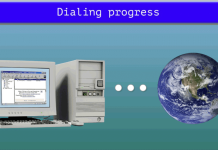Crafting an email campaign from scratch can be time-consuming and feels like an uphill battle. With the advent of chat GPT (generative-pre-trained prompt) technology, crafting great emails is now easier than ever! Chat GPT prompts provide helpful guidance to quickly and effectively create on-brand messaging so you can deliver effective email marketing campaigns. In this blog post, let’s explore how you can use chat GPT prompts to craft better emails for more successful email campaigns.
Introducing Chat GPT Prompts – What They Are and How They Work
Chat GPT Prompts are the latest evolution in email marketing strategies. By leveraging machine learning and natural language processing, Chat GPT Prompts provide automated personalized conversations between customers and brands. This technology can be used to increase customer engagement and retention while decreasing time spent on tedious tasks like creating emails by hand. Using a conversational format, customers have an easier time understanding and interacting with brands via email, which adds more value to the customer experience. All of this comes together to offer a smarter workflow that helps businesses save time and money, without sacrificing quality interactions with their customers.
Benefits of Using Chat GPT Prompts
Email marketing can be an effective way to nurture relationships with customers and drive results for businesses. However, it can be difficult to craft emails that consistently engage readers. Chat GPT prompts are an excellent solution, as they provide highly personalized email content that has been tailored to individuals’ interests and needs. The use of these prompts can lead to higher open rates, deliver more value in each email, and ultimately result in increased customer retention and sales. Additionally, using chat GPT prompts can save time since the personalized content is generated automatically, allowing businesses to retake control of their time while still providing targeted communications that generate desired results.
Useful GPT Prompts for Email Marketing
Promotional Emails
- “Write an email announcing a limited-time 20% discount on our premium subscription.”
- “Draft a promotional email for our upcoming holiday sale, featuring top-selling products.”
- “Create a BOGO email offer for our email subscribers, focusing on our best-selling items.”
- “Compose a pre-order announcement for our new product, including a special bonus for early buyers.”
- “Write an email to celebrate our company’s anniversary, offering exclusive deals for subscribers.”
Welcome Emails
- “Write a warm welcome email for new subscribers, including a 10% discount on their first purchase.”
- “Compose a welcome email highlighting the benefits and perks of joining our email list.”
- “Draft a welcome email outlining the type of content subscribers expect to receive.”
- “Create a welcome email for new customers, offering a special discount on their next order.”
- “Write an email introducing new subscribers to our brand story and company values.”
Educational/Informative Emails
- “Write an email sharing expert tips on how to use our software for maximum productivity.”
- “Create an informative email explaining the benefits and features of our latest product update.”
- “Compose a how-to email that guides users through a specific feature of our service.”
- “Draft an email discussing the latest industry trends and their impact on our customers.”
- “Write an email sharing tips and best practices for using our product more efficiently.”
Newsletter Emails
- “Write a monthly newsletter summarizing the latest news and updates in our industry.”
- “Compose a newsletter featuring curated content and resources on a specific topic.”
- “Create an email newsletter with company updates, success stories, and upcoming events.”
- “Draft a newsletter highlighting top articles and resources in our industry from the past month.”
- “Write a newsletter sharing recent product updates, new features, and customer testimonials.”
Event/Webinar Emails
- “Write an email invitation for an upcoming webinar on a hot industry topic.”
- “Compose a registration reminder email for an exclusive online event featuring a guest expert.”
- “Create a last-chance email encouraging subscribers to sign up for an upcoming workshop.”
- “Draft a follow-up email thanking attendees for participating in a recent webinar, including a recap and resources.”
- “Write an email sharing highlights and a replay link for subscribers who missed a live event.”
Re-engagement Emails
- “Compose a re-engagement email offering a special discount to inactive subscribers.”
- “Write an email to win back dormant subscribers, highlighting recent company updates.”
- “Create an email reminding inactive users about the benefits of our product or service.”
- “Draft an email encouraging subscribers to update their preferences to receive relevant content.”
- “Write a personalized email inviting lapsed customers to reconnect with our brand.”
Customer Feedback Emails
- “Write an email requesting product feedback from recent buyers, offering a small incentive.”
- “Compose an email survey to collect customer opinions on our latest product release.”
- “Create an email asking satisfied customers for testimonials to use in marketing materials.”
- “Draft an email to customers who have recently interacted with customer support, asking for their feedback.”
- “Write a follow-up email to customers after a purchase, requesting a product review.”
In Conclusion
These are just a few examples of the types of emails businesses typically send to their customers and subscribers. With the right strategy, email marketing can be an incredibly powerful tool for driving conversions, boosting brand loyalty, and engaging with your audience. To get the most out of your emails and maximize ROI, consider testing different strategies to find what works best
If you want to learn more about marketing, check out the rest of our blog. If you’re ready to start making content, sign up for a free trial to get the tools you need to make great marketing campaigns!
© 2023, Vertical Response. All rights reserved.







